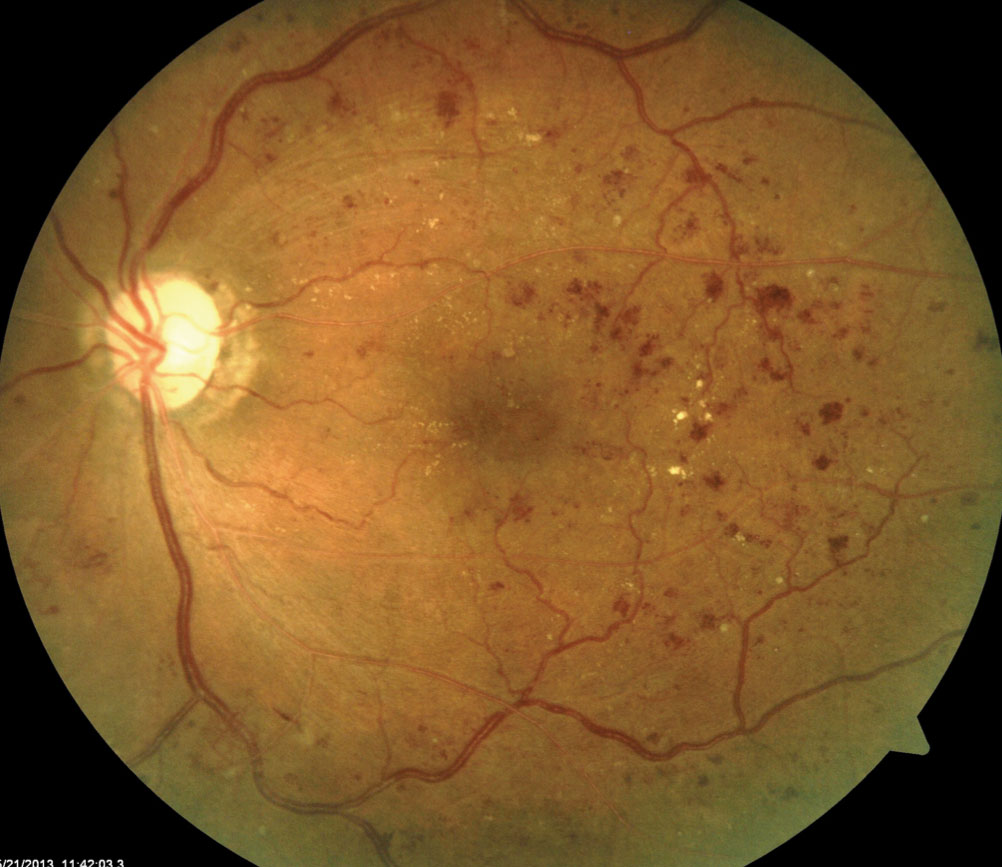 |
This study identified another clinical predictor of DR progression. Photo: Julie Torbit, OD. Click image to enlarge. |
Recent studies have suggested that abnormal blood perfusion in the optic nerve head (ONH) may play an essential role in the progression of diabetes-related eye diseases. Other cross-sectional studies have defined OCT-A metrics that are associated with retinal and optic neurological diseases, particularly the choriocapillaris. So, researchers recently sought to determine whether peripapillary choriocapillaris quantified by swept-source OCT-A is associated with diabetic retinopathy (DR) progression and diabetic macular edema (DME) occurrence. They found that choriocapillaris perfusion is a key player in the pathophysiology of DR.
The study, based in China, recruited 946 patients (1,879 eyes) with type 2 diabetes who had no DR or mild nonproliferative DR at baseline and no DME. All subjects underwent 3x3mm swept-source OCT-A centered on the ONH to generate angiograms in four layers: radial peripapillary plexus, superficial retinal capillary plexus, deep retinal capillary plexus and choriocapillaris. The researchers quantified choriocapillaris flow deficit percentage, vessel density and perfusion density.
During the three consecutive years of follow-up, 312 eyes (17%) experienced DR progression and 115 eyes (6%) developed DME. DR progression was related to a lower vessel density of the superficial retinal capillary plexus, a lower perfusion density of the superficial retinal capillary plexus, a lower vessel density of the radial peripapillary plexus and an elevated choriocapillaris flow deficit percentage.
DME occurrence was associated with a lower vessel density of the superficial retinal capillary plexus, a lower perfusion density of the superficial retinal capillary plexus and a higher choriocapillaris flow deficit percentage. The choriocapillaris flow deficit percentage significantly improved the power of traditional risk prediction models.
“Peripapillary choriocapillaris microcirculatory alterations have additional predictive value for predicting DR progression and development of DME, which is worth consideration for the development of public health policy and management of clinical diabetes mellitus,” the researchers concluded in their paper. “However, adoption of OCT-A as a test to be used for predicting DR progression should be taken with caution.”
Guo X, Chen Y, Bulloch G, et al. Parapapillary choroidal microvasculature predicts diabetic retinopathy progression and diabetic macular edema development: a three-year prospective study. Am J Ophthalmol. July 18, 2022. [Epub ahead of print]. |

